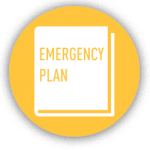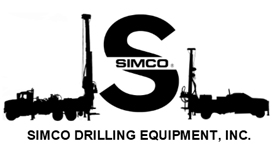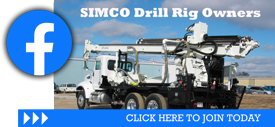Well drilling is often an isolated job in the middle of a vast cornfield, a remote fledgling housing development, or NOWHERE. When it’s just you, your partner and your rig for miles around – are you prepared for a worst-case-scenario emergency? What happens if one of you collapses? When time is of the utmost importance, it’s imperative to have a comprehensive emergency plan.
 Each job and each location is unique and requires a unique plan for the best emergency response to keep your crew safe. Here are some critical points from the National Driller article Emergency Action Plans Keep Drilling Jobs Safe to keep in mind when creating your own emergency plan:
Each job and each location is unique and requires a unique plan for the best emergency response to keep your crew safe. Here are some critical points from the National Driller article Emergency Action Plans Keep Drilling Jobs Safe to keep in mind when creating your own emergency plan:
- Contact the local emergency response teams to find out their typical response time to the area of your drilling job. If the response time is greater than 4 minutes, the people on the job site need to be CPR and first aid trained.
- It’s important to have a fully stocked and OSHA-approved first aid kit on board. There should be one for each vehicle and each worker on the site needs to know how to use the kit.
- Pack flares or bright emergency lights that will flash so that emergency responders can easily locate you.
- Be sure to have charged cell phones and fully charged backup batteries on hand.
- It’s important to remember that calling 911 from a cell phone is very different from calling on a land line. A land line call goes directly to the closest dispatch who can actually see the address of the call even if you don’t know the exact address yourself. With a cell phone, the call frequently goes to a regional call center where they may or may not get latitude and longitude readings within 300 meters of the caller, and cell calls can be easily dropped if towers are too far away. The rules to follow for calling 911 on a cell phone from your drilling site are –
- Immediately give your location address and closest crossroads
- Give the dispatch the cell number you’re calling from in the event of a dropped call.
- Explain the precise situation and what service is needed – ambulance, fire service, etc.
- Set off your flares or set up your emergency lights to flag down responders.
- Know any fire hazards that may be present at the job site before you start the job.
- All employees present should be wearing Flame-Retardant clothing if there is the possibility that flammable gas can be produced from the holes you’ll be drilling.
- Ensure you have a class B and C fire extinguisher on board and that it is up-to-date and ready for use.
- Establish a rendezvous point for all employees a safe distance from the site in case of a downhole gas fire, in which case evacuation is the safest plan.
With a little preparation and common sense, an emergency action plan can be easy to create, simple to implement, and essential to saving the lives of your employees. Talk to your company’s Safety Officer or contact OSHA to learn more about state and federal safety regulations as they apply to your business.
*Disclaimer: SIMCO Drilling Equipment, INC. offers this information as a courtesy of industry shared knowledge and is no way liable for the safety of or management of drilling operations outside SIMCO Drilling Equipment, Inc. Please refer to your own company safety rules and regulations for specifics concerning best safety practices for your crew and drilling operations.
This information was derived from an article in the May 6, 2016 issue of National Driller



